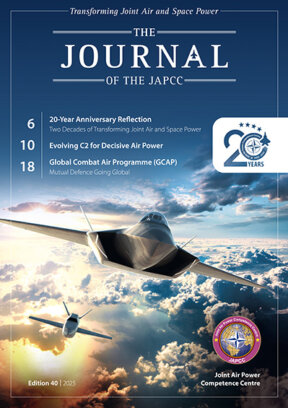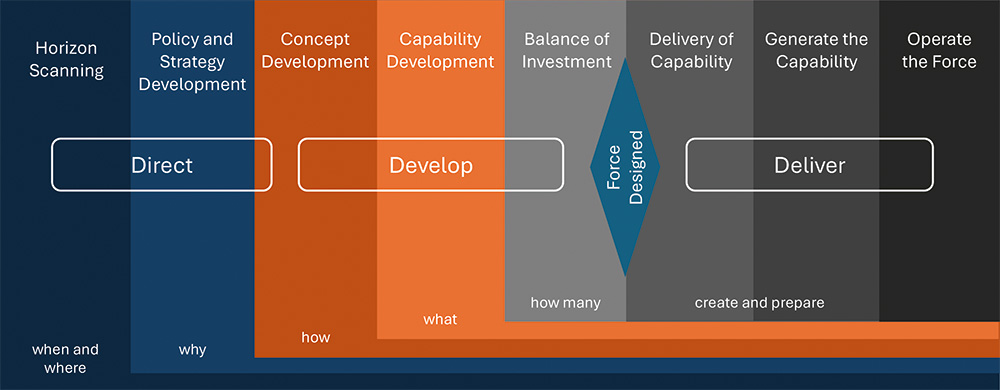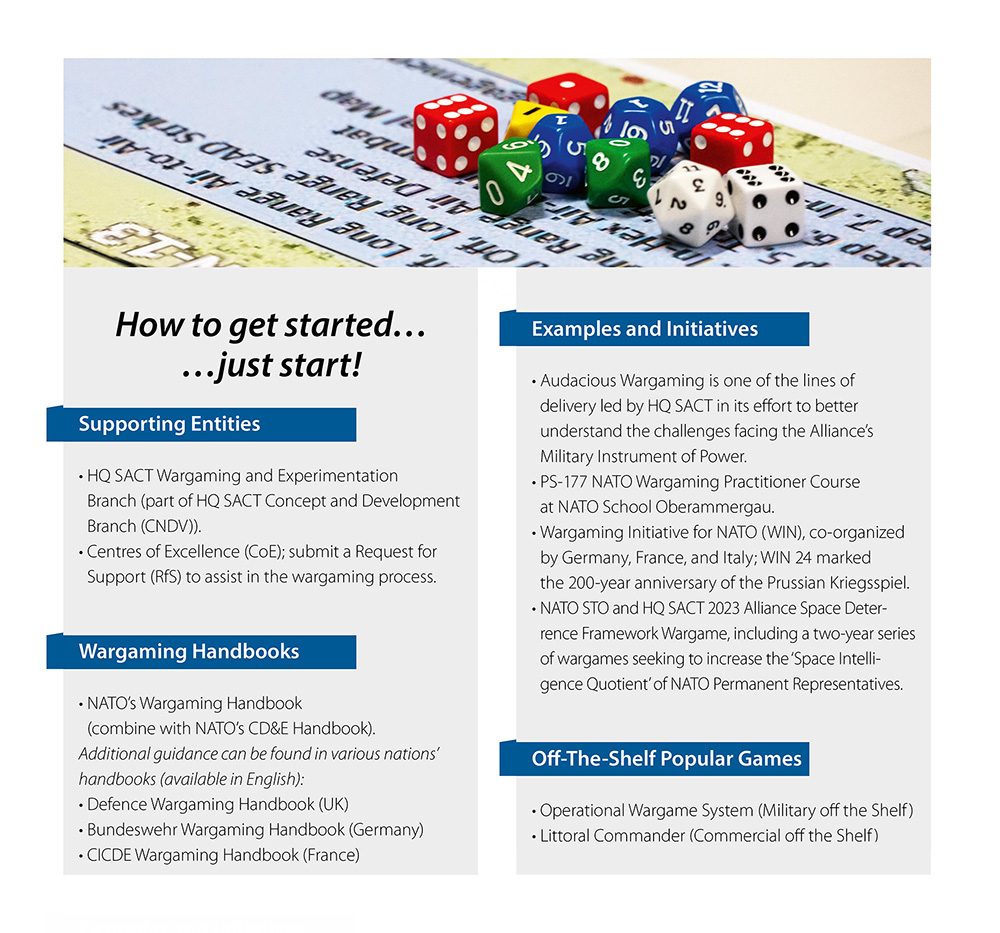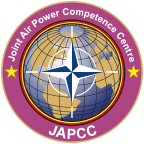Introduction
During World War II, members of the Women’s Royal Naval Service (Wrens) developed a remarkably effective wargame to counter German U-boats.1 Armed with little more than chalk, bedsheets, and a basic understanding of naval warfare, they simulated convoy movements and enemy submarine attacks, enabling naval officers to refine their anti-submarine strategies.2 This simple yet powerful exercise led to new tactics, techniques, and procedures (TTPs) and dramatically improved the Royal Navy’s ability to protect vital supply lines in the Atlantic.
This historical episode underscores wargaming’s enduring value – not only in tactical applications, as seen in the Wrens’ story, but also in shaping NATO’s modern capabilities. NATO now navigates an era of escalating global competition, proxy warfare, technological disruption, and multi-domain conflict.3 Much like in World War II, decision makers must contend with uncertainty and complexity in this volatile security landscape. In response, NATO has renewed its emphasis on wargaming as a vital analytical tool to drive transformation by strengthening underlying conceptual foundations.4
A Need for Deliberation
Recent advancements in the air and space domains reflect wargaming’s growing role in formulating and evaluating concepts for future force design.5 Consequently, this edition of the JAPCC Journal presents a timely opportunity to explore wargaming’s broader dimensions and strategic implications in this evolving context.
This article posits that wargaming is an indispensable instrument for concept development in future force design. Primarily, because wargaming – with its human-centric nature – has the power to sharpen strategic thinking and cultivate operational art into this process, i.e., to conceptualize future force requirements in ways that transcend computational logic. However, policymakers and military leaders must avoid misguided conclusions or unrealistic expectations to leverage its strengths in future force design efforts effectively. This requires recognizing the intrinsic analytical limitations of wargaming within this process. While science plays a crucial role in shaping future forces, wargaming’s core value is that it fosters operational art: it enhances the participants’ critical thinking, stimulates their imagination, and helps them gain conceptual clarity in complex and uncertain scenarios.6
Figure 1: Force Development Model
(adapted from UK Defence Experimentation for Force Development Handbook V2 [2021]).12 © Copyrighted
Wargaming in a Nutshell
Wargaming is a form of serious gaming in which gameplay is blended with real-world strategy. While not exhaustive, wargames take various forms, including board games, scaled miniatures, tabletop exercises, and computer-based simulations. They can be commercially available or custom-built, even with simple materials, as demonstrated in the Wrens’ case. Hybrid versions that blend physical and digital elements have also gained popularity. Crucially, wargames do not involve the actual deployment of military forces. Such activities fall under field exercises instead.7
Depending on their design, wargames are open or closed, featuring turn-based strategies or real-time decision-making.8,9 Moreover, many wargames incorporate detailed maps and role-playing elements to enhance immersion. However, the level of realism varies depending on the game’s intended focus on strategic depth, historical accuracy, or creative exploration.
While wargames can be recreational, they are widely applied in professional settings for policy analysis, education, and team building. From the Prussian ‘Kriegsspiel’ to modern defence simulations, wargaming has evolved into an important tool for military strategy, business simulations, and crisis management.
In a structured, safe-to-fail environment, free from real-world consequences, wargaming allows participants to engage with scenarios of conflict or competition by presenting their decisions that dynamically influence one another.10 Embedded in a culture that allows questions and mistakes, this interplay supports brainstorming, knowledge building, and strategic refinement, helping organizations explore alternative courses of action (COAs) and prepare for unforeseen contingencies.11
Control and adjudication serve as the foundation of any wargame. Participants can determine outcomes, which fosters engagement. Outcomes can also be overseen by a facilitator or adjudication team to ensure structure and impartiality. Its rules may be fixed, prescribing unit movement and engagement, or flexible, relying on logic and best practices.
Wargaming’s Role in Future Force Design
Future force design – or force development – aims to anticipate future force requirements by analysing potential adversaries’ intents and strategies and informing defence planning. It includes a strong transformational element, as it shapes (and reshapes) military capabilities to meet evolving operational demands. It enables NATO and nations to proactively adapt their future capabilities to emerging threats.
As illustrated in Figure 1, force development follows three key phases: Direct, Develop, and Deliver. Wargaming plays a crucial role in the development phase, particularly in Concept and Capability Development, the steps that translate strategic foresight and horizon-scanning insights into impactful future capabilities. Wargaming is a valuable tool in these stages as, through the active engagement with dynamic and unpredictable situations, it enhances the participants’ critical thinking and adaptive capacities, which results in better performance in decision-making, performance evaluations, and resource allocations.
The first step, Concept Development, typically involves abstract, high-level assessments, as this formative stage centres on exploring foundational ideas and broad strategic frameworks. As concepts evolve and gain structure, wargaming often becomes a more focused and applied exercise during Capability Development, supporting the evaluation of more concrete and practical applications.
Strengths and Limitations of Wargaming
Wargaming’s interactive and immersive nature enables the identification of hidden vulnerabilities and the exposure to flawed assumptions.13 It especially facilitates a deeper understanding of complex systems.
Wargaming intrinsically places the interaction with and between human participants at its core. This interactive element sets wargaming apart from related methodologies, such as modelling and simulation, which prioritize computational processes. While wargaming incorporates elements of simulation, by anchoring its practice in human involvement, wargaming encourages dynamic decision-making and adaptability in ways computational methods cannot replicate.
However, it must be acknowledged that wargaming brings a qualitative perspective – with limited validation power – rather than science to the table. Wargames can illustrate that something is plausible, narrowing down the number of probable outcomes, but they will not be able to predict outcomes with certainty.14
Designing wargames that accurately forecast outcomes remains ‘the Holy Grail’ of wargame designers.15 They rely on constructed scenarios that, at best, offer general truths rather than precise predictions. Conway’s Law provides further caution, suggesting that biases, silos, and structural limitations of wargame creators may unintentionally shape a game’s scope and limit its broader integration.16
Another scoping challenge lies in participant expertise. On the one hand, participants must be qualified and well-informed within their designated areas of expertise in the wargame. An evaluation of autonomous collaborative platforms (ACPs), for instance, may seek participants with backgrounds in air or drone operations. However, relying exclusively on experts from highly specialized, yet directly related, disciplines can be limiting. While their insights are valuable, they may lack the interdisciplinary perspectives needed to translate findings effectively into multi-domain contexts or to account for logistical, industrial, and other kinds of constraints further down the chain.
Wargaming further holds the risk of false lessons being identified from a single run of a wargame.17 However, the considerable time required for setup, execution, and analysis, even when supported by computer aids, often limits the practicality of conducting multiple iterations to refine or validate outcomes. What adds to this is that the human-centred nature of wargaming restricts its ability to replicate scenarios with precision, thereby constraining the depth and breadth of insights that could be gained through repeated iterations. No two wargames will ever be alike.18
Despite these limitations, wargaming remains a powerful tool for stress-testing ideas, uncovering potential risks, and fostering innovation. It does not provide absolute certainty but offers a structured environment for exploring possibilities, allowing decision-makers to anticipate challenges and refine strategies in ways other methodologies cannot.
Key Considerations for Wargaming Within Force Design
Formulating operational concepts within future force design demands a nuanced grasp of interdependencies and interactions rather than focusing solely on tactical mechanics. As argued here, wargames offer a powerful tool for qualitatively analysing and navigating these complexities. In this sense, wargames can also serve as a warm-up exercise, fostering the right mindset among participants and preparing them to approach force design challenges with a deeper, more interconnected perspective.
The Wrens’ wargame demonstrates that generating valuable insights does not always require complex simulations. Even though wargames will always need a certain amount of commitment from developers, planners, and participants, their simple yet effective exercise demonstrates how structured discussions, even in minimal settings, can educate and refine strategic thinking, enhancing operational effectiveness. Because accessible, resource-efficient approaches require lower time demands and reduce logistical barriers, they are convenient to implement and encourage interdisciplinary engagement and broader participation. This facilitates meaningful dialogue on how various domains shape operational effects in a theatre. Their production speed also allows a quicker response to a sponsor’s request.19 Additionally, their ability to conduct repeated runs is a key advantage, as streamlined formats enable rapid iteration, revealing patterns and insights that might otherwise go unnoticed. In this way, these simpler setups may allow for deeper assessments of complex operational contexts.
However, while simple wargaming formats support iterative learning and broad engagement, specific operational contexts demand more sophisticated analyses – for instance, when aiming for so-called ‘deep dives’ to understand mission-specific or theatre-level challenges better. In such cases, integrating advanced models, potentially supported by computer-aided tools, can offer a more thorough exploration of operational complexities. AI, for example, could assist in the adjudication process, enable adaptive scenario generation, or contribute to enhanced realism. Carefully selecting diverse participants, both in wargame design and execution, is also important, to minimize blind spots and ensure broader applicability across domains.
Additional methodological refinements can improve wargaming’s validation potential. For instance, integrating structured scenario design with real-world data strengthens the analytical rigour of wargaming exercises, ensuring their relevance for operational concept development. Another option is to narrow the scenario focus to typical and high-priority events, which enhances realism and applicability, leading to more precise and actionable insights.
Nevertheless, even with these methodological enhancements, wargaming remains a tool for iterative refinement rather than rigid validation. Especially in the conceptual stages of force development, wargaming should not be viewed as a predictive tool but as a powerful method for qualitative assessment and idea refinement. It should be regarded as a mechanism for identifying plausible and implausible approaches, informing strategic adjustments rather than providing definitive conclusions. The insights generated through wargaming generally need further evaluation through complementary analytical methods. Therefore, it should be combined with other methods to achieve comprehensive results.20
As a final point, it is essential to recognize that wargaming, particularly within the context of future force design, is not about achieving victory. Its true value lies in developing strategic acumen and deepening the understanding of how future forces can effectively navigate operational friction. Paradoxically, the most valuable insights often emerge from setbacks. In fact, the ‘losing’ team frequently derives the greatest lessons, as failure tends to drive more refined, resilient, and adaptable force structure solutions. Also, wargaming helps to identify failure points early, enabling proactive adjustments to strengthen force design.
Banner Image: © NATO Allied Command Transformation
Conclusion
Wargaming remains a vital and powerful instrument for refining operational concepts within force design. While it cannot predict the future, its hallmark – its emphasis on the human element – ensures it uniquely fosters operational art into the equation. Though its limitations must be acknowledged, wargaming narrows the spectrum of probable outcomes and improves decision-making by refining human judgment and creativity. Although the analytical power of wargaming can be enhanced by leveraging emerging technologies, such efforts can distract from what should be the focus of a wargame: its human-centric nature, i.e., the players’ decision-making. By ensuring that wargaming is integrated into a broader analytical toolkit, both NATO and NATO members can maximize wargaming’s contribution to shaping resilient and future-proof force structures in their evolving security landscapes.
Afterword
The Royal Netherlands Air and Space Force (RNLASF), in partnership with Royal NLR, TNO, and JAPCC, is accelerating efforts to embed wargaming within a rigorous, comprehensive methodological framework. This collaborative undertaking is geared to systematically shaping actionable and future-looking operational concepts that strengthen a resilient force structure in continued alignment with national and NATO priorities.













